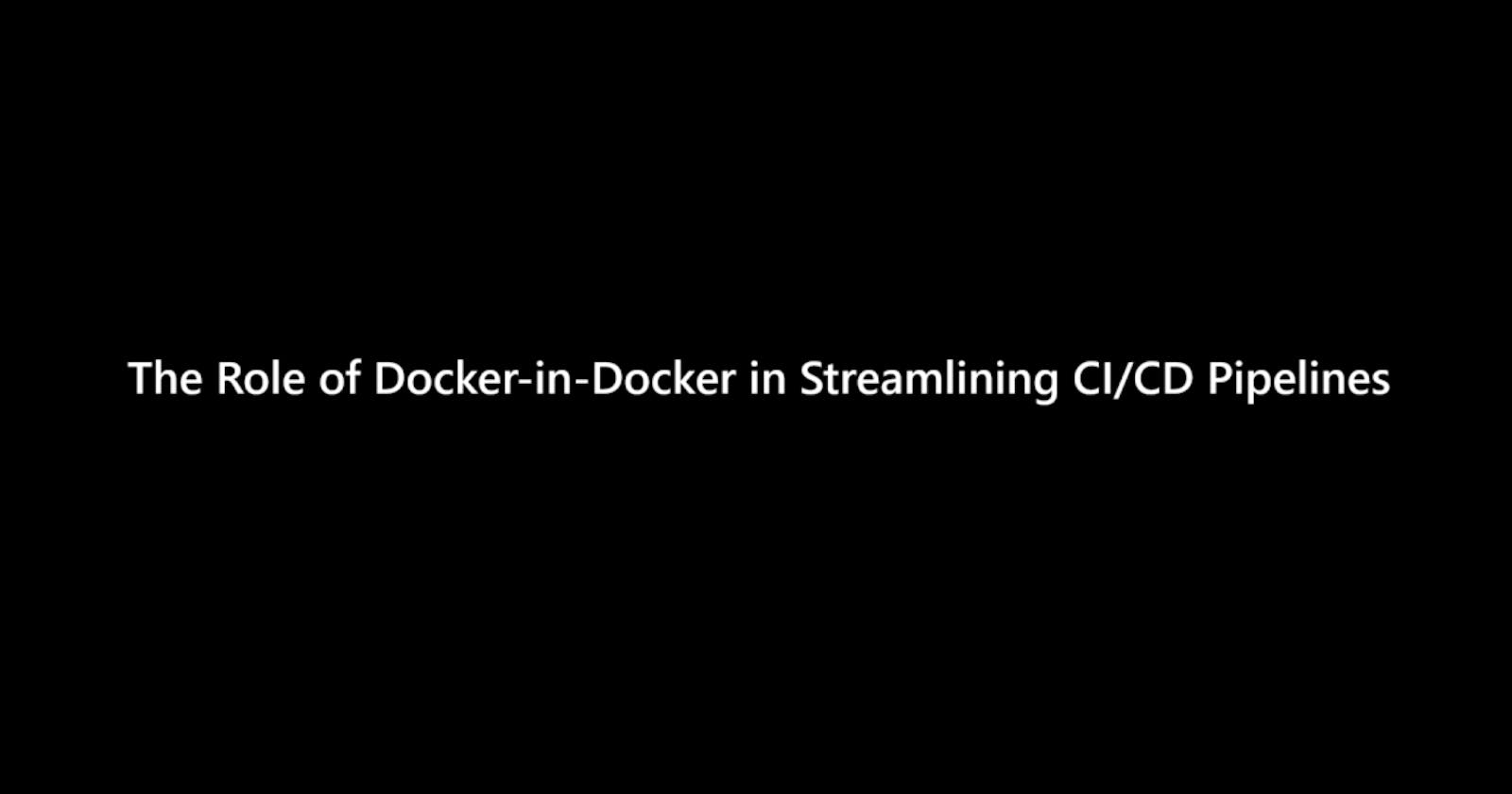Running a Docker container inside another Docker container is a concept known as "Nested Docker Containers" or "Docker-in-Docker" (DinD). It involves running a Docker daemon (the background service that manages containers) inside an existing Docker container. This nested containerization can be useful in specific scenarios, but it comes with some important considerations.
Deploy applications. Docker, in particular, has become the de facto standard for containerization. But what if we told you that you can run Docker containers inside other containers? This technique, known as "Docker-in-Docker" (DinD), is a powerful tool with various use cases. In this blog, we'll explore one such scenario where running Docker inside a container makes perfect sense.
CI/CD Pipeline with Nested Docker Containers
Suppose you have a CI/CD (Continuous Integration/Continuous Deployment) pipeline that builds and tests Dockerized applications. In this pipeline, you want to use Docker containers to create isolated and consistent build and test environments. Here's how running Docker inside a container can be useful:
Host Environment: You have a host machine that runs a CI/CD tool like Jenkins or GitLab CI/CD, which orchestrates your build and test pipeline.
Build Environment (Container 1): For each new code commit, you want to build your application inside a clean environment. You create a Docker container (Container 1) with all the necessary build tools, dependencies, and your application code.
Docker-in-Docker (Container 2): Inside Container 1, you need to build a Docker image for your application. To do this, you run a nested Docker container (Container 2) that has the Docker daemon installed. Container 2 is responsible for building and tagging Docker images.
This nested Docker container (Container 2) can be launched with Docker's official "dind" (Docker-in-Docker) image. It allows you to interact with the Docker daemon from within a container
For To make your own container inside the container image for security purposes check out this video steps to launch a docker container in the container youtu.be/e6VgrCmSfd4?si=K3YzMm0btrVMRSVA
Benefits and Considerations Running Docker containers inside containers offers several advantages in this CI/CD pipeline scenario:
Isolation: It isolates the Docker build process from the host system and the host's Docker daemon. This prevents conflicts or potential issues that might affect the CI/CD pipeline.
Consistency: The pipeline's behavior remains consistent across different environments because you control the environment within the builder container.
Alternatives While Docker-in-Docker is a powerful tool, some alternatives might simplify your CI/CD pipeline. Many CI/CD tools, such as GitLab CI/CD, Jenkins, and CircleCI, offer native Docker support, making the process more straightforward and potentially eliminating the need for Docker-in-Docker.
